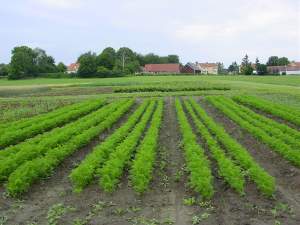Relationship between crop management and phosphorus availability
The cropping system experiments in Önnestad and Bollerup includes conventional and organic cropping systems with and without livestock. The experiments were started in 1987 and the methods of crop management is intended to represent long-term sustainable and environmentally friendly organic and conventional cropping systems. The Swedish Rural Economy and Agricultural Society in Kristianstad is running the experiments. In 2006, the fourth crop rotation started with 2012 as the last year. On the experimental site Önnestad, the soil is well suited for vegetable crops and a watering system is available. Here, vegetables (carrots, onions and red beets) have been included in three of the cropping systems. In Bollerup, the main focus is on energy crops.
The cropping system experiments give an opportunity to study how crop management methods and soil factors influence the utilisation of plant nutrients. A higher utilization of phosphorus in plant production should reduce the need for phosphorus fertilizers and reduce the risk of losses of phosphorus to the environment. More knowledge is needed concerning the influence of soil and cop management factors on plant utilization of phosphorus.
In this project, we are studying the influence of different factors on phosphorus utilization in the cropping system experiments. The amounts of available phosphorus in the soil and the plant uptake of phosphorus will be determined for selected cropping sequences in the Önnestad and Bollerup experiments. The aim is to identify relationships between phosphorus utilisation and soil and crop management factors. Different methods for determining reversibly sorbed soil phosphorus will be compared to determine which method that will most closely predict plant phosphorus uptake.
Funding: Partnership Alnarp and the Swedish Rural Economy and Agricultural Society in Kristianstad.
Contact: Siri.Caspersen@slu.se
Links

